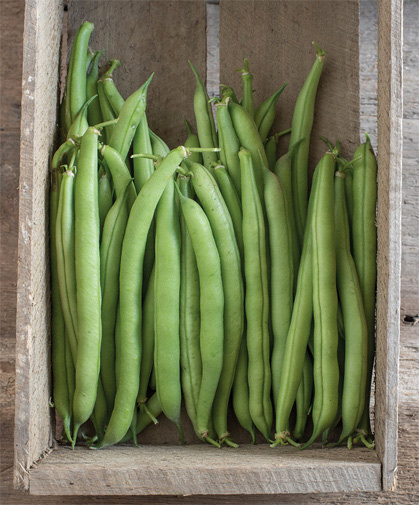Bush Bean - Key Growing Information
SCIENTIFIC NAME:
Phaseolus vulgarisCULTURE:
Choose well-drained soil with a pH range of 6.5–6.8. Optimum soil temperature for germination is 70–90°F (21–32°C). Plant when daytime soil temperatures average at least 60°F (16°C) or risk poor germination. Inoculants can increase yields. DAYS TO MATURITY:
From date of direct seeding.DIRECT SEEDING:
After last frost date sow seeds about 2" apart, 1" deep, in rows 20–36" apart. AVG. DIRECT SEEDING RATE:
1M/125', 1 lb./175', 116M/acre at 8 seeds/ft. and 3' row spacing.SUCCESSION PLANTING: For a continuous supply, make successive sowings every 2-3 weeks through midsummer. INSECT PESTS:
Mexican bean beetles and potato leafhoppers can be controlled with insecticides such as pyrethrin or azadarachtin.DISEASE:
Plow under or remove and compost bean straw in the fall to hasten destruction of most disease organisms. For Sclerotinia spp. (white mold) control, plant at wider row spacing to promote drying of plant leaves and soil. Practice a 3-year crop rotation. All our bush bean seeds are produced in areas known to be free of halo blight.HARVEST:
Pick regularly to encourage new pod set. Filet Beans: For extra-fine pods ( 1/4" diam.) pick every 36–48 hours with a maximum of 2 days between harvests in hot weather. STORAGE:
Store at 40°F (5°C) and 90% relative humidity for 7–10 days.SEEDS/LB.:
See individual varieties.PACKET:
175 seeds, sows 29'.


